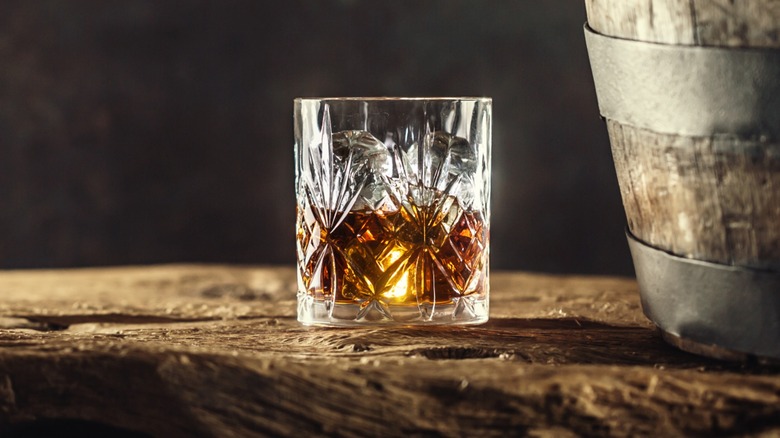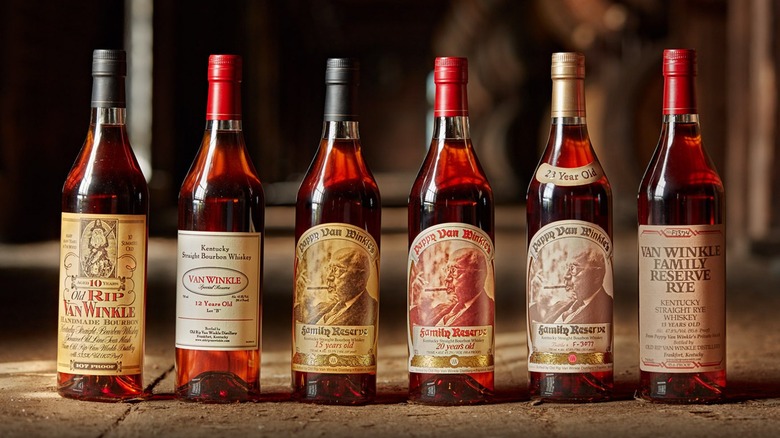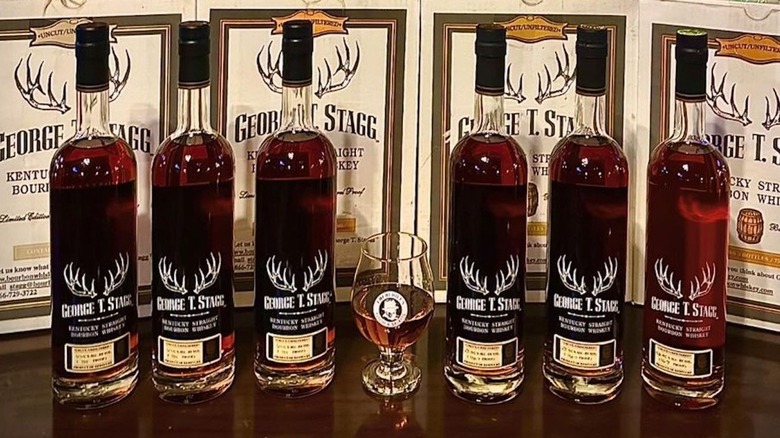The Bourbon Brand You Should Be Buying Over Old Rip Van Winkle And Why
There is certainly no shortage of bourbon on the market today. In Kentucky, which accounts for 95% of the total bourbon production in the U.S. (and hence, the world since bourbon is a distinctly American spirit), there are currently nearly 100 different bourbon and whiskey brands. And one of the most well-known names is Old Rip Van Winkle, the maker of Pappy Van Winkle, a name so famous that even non-bourbon fans have likely heard of it.
Pappy Van Winkle is also incredibly rare, not to mention expensive, with bottles of the Pappy Van Winkle Family Reserve 23 Year selling for thousands of dollars on the secondary market — one bottle of a limited edition 23-year-old Pappy Van Winkle once sold for $52,000 at an auction in 2022. And there's no doubt that Old Rip Van Winkle produces excellent bourbon. But there's actually another brand that you should be buying instead. That brand, which came in at number one in our ranking of the 27 best bourbon brands (which takes into consideration price, quality, and availability) ahead of Old Rip Van Winkle, is Stagg.
How Stagg compares to Old Rip Van Winkle
Compared to Old Rip Van Winkle, which produces five different bourbon labels (Old Rip Van Winkle 10 year, Van Winkle 12 Year, Pappy Van Winkle 15 Year, Pappy Van Winkle 20 Year, and Pappy Van Winkle 23 Year), Stagg offers a much more limited offering, with just two labels: George T. Stagg, part of the Buffalo Trace Antique Collection, which is aged for a minimum of 15 years; and Stagg (formerly known as Stagg Jr. until 2021 when it rebranded as Stagg, leading to concerns that Stagg, too, had become a rare bourbon find), which is aged for nearly 10 years.
And while not all of the bottles between the two labels are comparable — it really wouldn't be fair to compare a 10-year to a 23-year — the closest comparisons would be between the Old Rip Van Winkle 10 Year and the Stagg, and the Pappy Van Winkle 15 Year and the George T. Stagg since they have been aged for similar amounts of time. Stagg received a rating of 97.5 from Jim Murray's Whisky Bible while Old Rip Van Winkle received 94.5 points.. Meanwhile, George T. Stagg received 96.5 points from Jim Murray's Whisky Bible and Pappy Van Winkle received a rating of 98.
How the prices compare between Stagg and Old Rip Van Winkle
When it comes to pricing, there are similarities in the manufacturer's suggested retail price (MSRP), but a wide range when it comes to what the bottles are going for on the secondary market. While both the Old Rip Van Winkle 10 Year and the Stagg have similar MSRPs of around $70, their resale values differ significantly, with Stagg available for less than six times MSRP while the Old Rip Van Winkle fetches more than 14 times MSRP on the secondary market.
There's a similar divergence in price between MSRP and the secondary market price for the Pappy Van Winkle 15 Year and the George T. Stagg. The Pappy Van Winkle 15 Year has an MSRP of $119.99 but fetches more than 36 times the MSRP on the secondary market, while the George T. Stagg, which has an MSRP of $125, sells for more than 15 times the MSRP on the secondary market.
What the reviewers and fans think
In one Reddit post asking for opinions between a George T. Stagg and a Van Winkle 12 Year, pretty much everyone favored the George T. Stagg over the Van Winkle. Most people also picked the George T. Stagg over the Old Rip Van Winkle 10 Year and Van Winkle 12 Year when asked to compare the bottles on a second Reddit post. On a third Reddit post asking people to choose between a George T. Stagg and a Pappy Van Winkle 15 year, the results were more mixed, with some commenters noting that they would pick the Pappy as it has more name recognition value or that they would pick the Pappy if offered at the same price, just over MSRP, but would pick the George T. Stagg at the secondary market price.
Several people who have tasted the George T. Stagg and the Pappy Van Winkle 15 Year (among others in the Old Rip Van Winkle lineup) prefer the George T. Stagg, including one that was in a blind taste test. At the end of the day, which bourbon you prefer is subjective. But when you factor in price (and the secondary market price is the relevant one, here), quality (which seems comparable to slightly favorable for Stagg), and availability, Stagg is the better overall choice. You also have a better chance of finding a bottle of Stagg at a price you can afford, which means that you might actually get to buy it.



